Presenting eyewitness accounts of epochal events which rocked the city and country in the last century
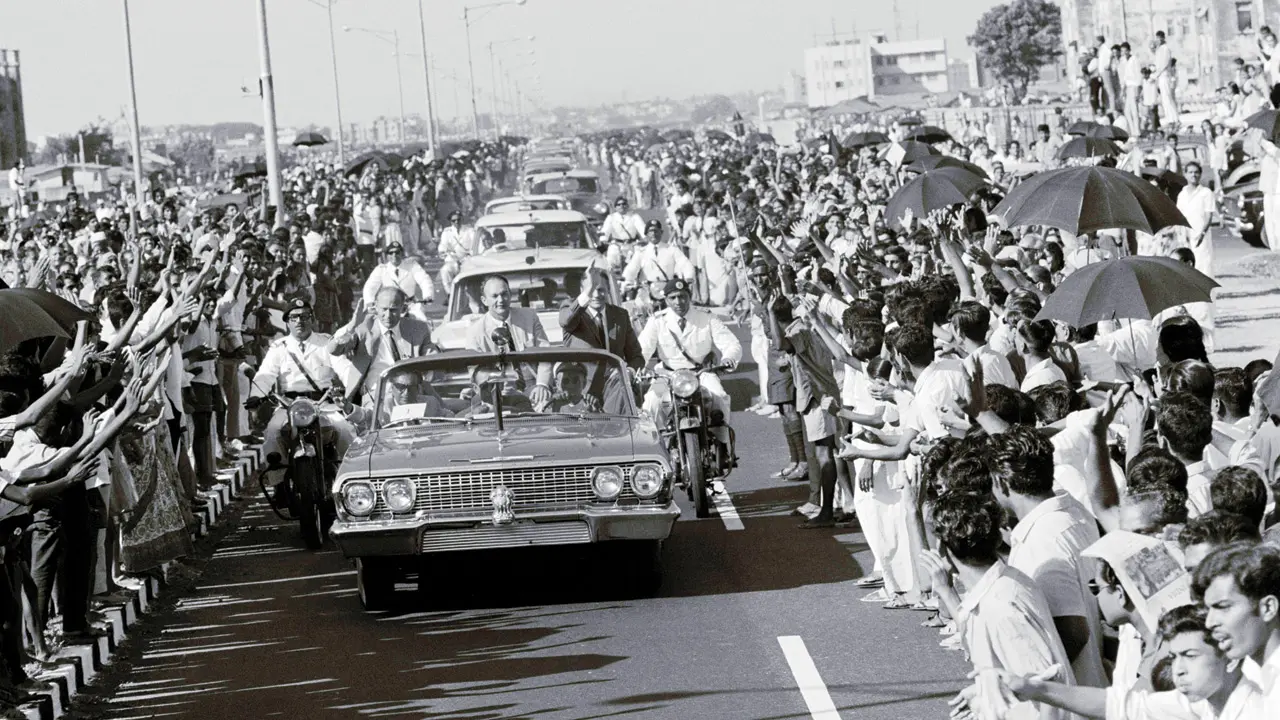
(From right) Neil Armstrong, Michael Collins and Edwin “Buzz” Aldrin driving through Bombay in October 1969, three months after their historic moon landing. Pic/Getty Images
 While people currently reminisce on their experiences of the 1971 war, we document other defining flashpoints that shifted the mindscape. These exclude devastating bombings and terror attacks, which have been chronicled at length.
While people currently reminisce on their experiences of the 1971 war, we document other defining flashpoints that shifted the mindscape. These exclude devastating bombings and terror attacks, which have been chronicled at length.
‘We felt scattered and lost’
Victoria Dock explosion, April 14, 1944
Her 86 years cannot dim details etched firm in Sarla Lodaya’s mind. She has visceral memories of the grim accident shattering her six-year-old world within minutes. On April 14, 1944, the British freighter, SS Fort Stikine, carrying inflammable materials, cotton bales, raw sulphur, timber, scrap iron and gold bullion, exploded with incredible force, injuring and killing thousands. Taking three days to control the fire, 8000 men cleared five lakh tonnes of debris for seven months.
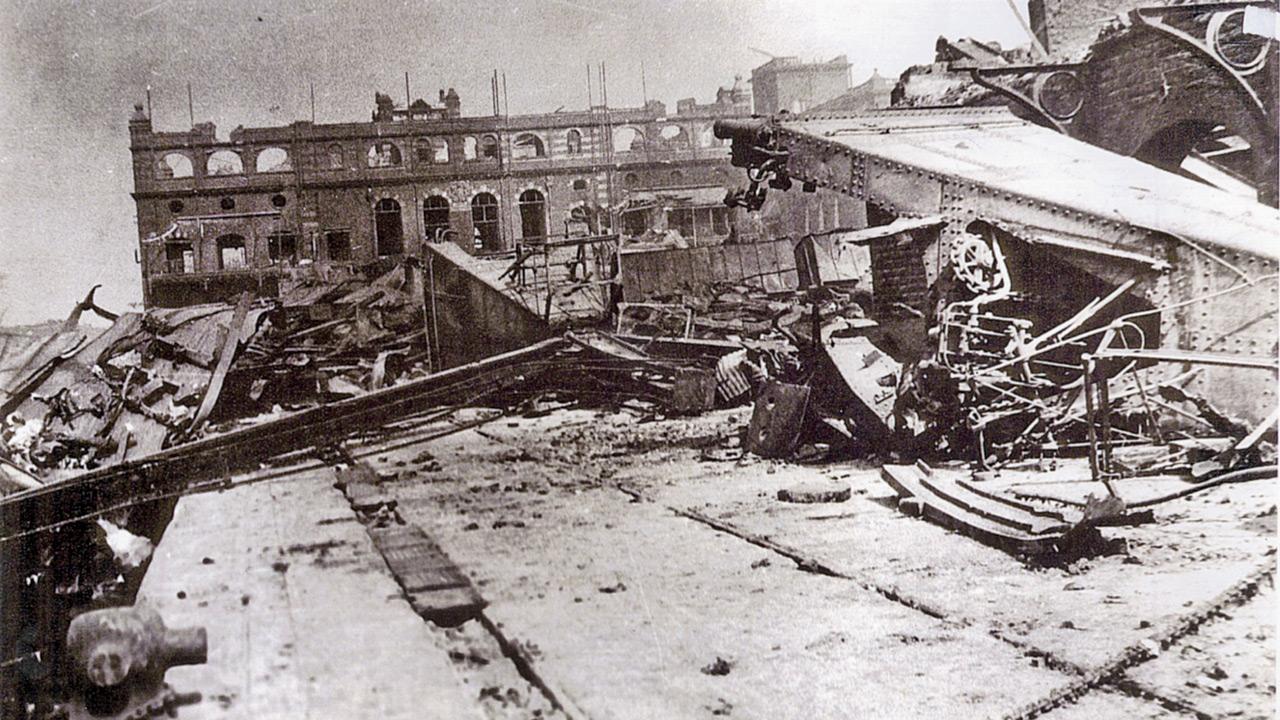
Victoria Dock in a devastated condition after the explosion on April 14, 1944. It took three days to control the fire, and seven months to clear five lakh tonnes of debris. File pic/Bombay Port Trust
Speaking from her Chembur home, Lodaya narrates how that traumatic afternoon unfolded for her Kutchi family in a Masjid Bunder building called Narshi Keshavji No Mado. Not everyone was home. Children were yet in school and men at work. That left elders, housewives and younger children vulnerable at 4 pm when flames broke out. Her father, Manilal Dhulla, in the business of leasing nearby godown space, was away in Khandesh (interior Maharashtra) collecting dues from customers. Purbai, her 27-year-old mother, was about to prepare tea, when she and little Lodaya, playing in the passage outside the chawl’s open doors suddenly heard shouts of “Aag lagi, aag lagi!”
“Our terrace was engulfed by smoke spreading from a shower of burning material from the ship falling on it. Neighbours from the opposite side screamed, warning us to run,” says Lodaya. “Jewellery for my aunt’s upcoming wedding lay in the home safe. The day’s cash handed over at 2 pm by our Mehtaji [accountant] was also stored in the cupboard. Finally, of course, the vault itself melted. Baddho rupyo raakh thai gayo [all the money was reduced to ashes]. This was so dangerous, no time to gather valuables, my mother urged. We dashed downstairs, no chappals on our feet, not a scrap in our hands.
“Our father, at a railway ticket window buying the fare back to Bombay, got a shock when the news reached him. His godown wasn’t spared either. Without financial support, the heart succumbed to stress. He died two years later, only 32. Till we got alternative living arrangements [we shunted between any number of them], well-wishers like Lilbai helped. The wife of the owner of Lakhmichand Cooverji & Co, Talpatriwala, she took us to her relative’s spare room at Currey Road, offering temporary refuge. Our future a question mark, we felt scattered and lost. I learnt it is possible to make do with really few belongings.”
‘I waved back. I was five. I was there’ first Moon landing,
July 20, 1969; the astronauts’ Bombay visit, October 26, 1969
Remembering the epic first moon landing, architect-poet Mustansir Dalvi’s blog described an exciting episode — of welcoming the space men who took “one small step for man, one giant leap for mankind”, three months after their stupendous feat.
He writes: “When we were kids, Apollo meant the Gateway of India. That changed after Apollo 11. On July 20, 1969, the Apollo Mission put man on the moon. We knew their names, vivid and evocative — Neil Armstrong, Michael Collins, Edwin Aldrin. Images of spacesuit-shod, glass visor-wearing astronauts were in newspapers, on walls of restaurants, on Volga ice cream wrappers, on covers of firecracker boxes during Diwali.
“On October 26, at five years old, I found myself at Crawford Market, under Lockwood Kipling’s marble murals, where DN Road swings to Carnac Bunder. My uncle Musta-ali, whose finger I held on to, hoisted me up on the railing at the first roar from the mob. Flanking motorcyclists in white uniforms formed the avant-garde. The cavalcade arrived soon, dark cars. In one of them three red faces in suits, their arms out, waving. Armstrong, Collins, Aldrin. As they swept past, I looked at them, they looked at me, and I waved back and waved and waved… “The astronauts came to Bombay for their tryst with me. I was five. I was there.”
‘I was determined to work in our rashtra bhasha’
Gandhiji’s assassination, January 31, 1948
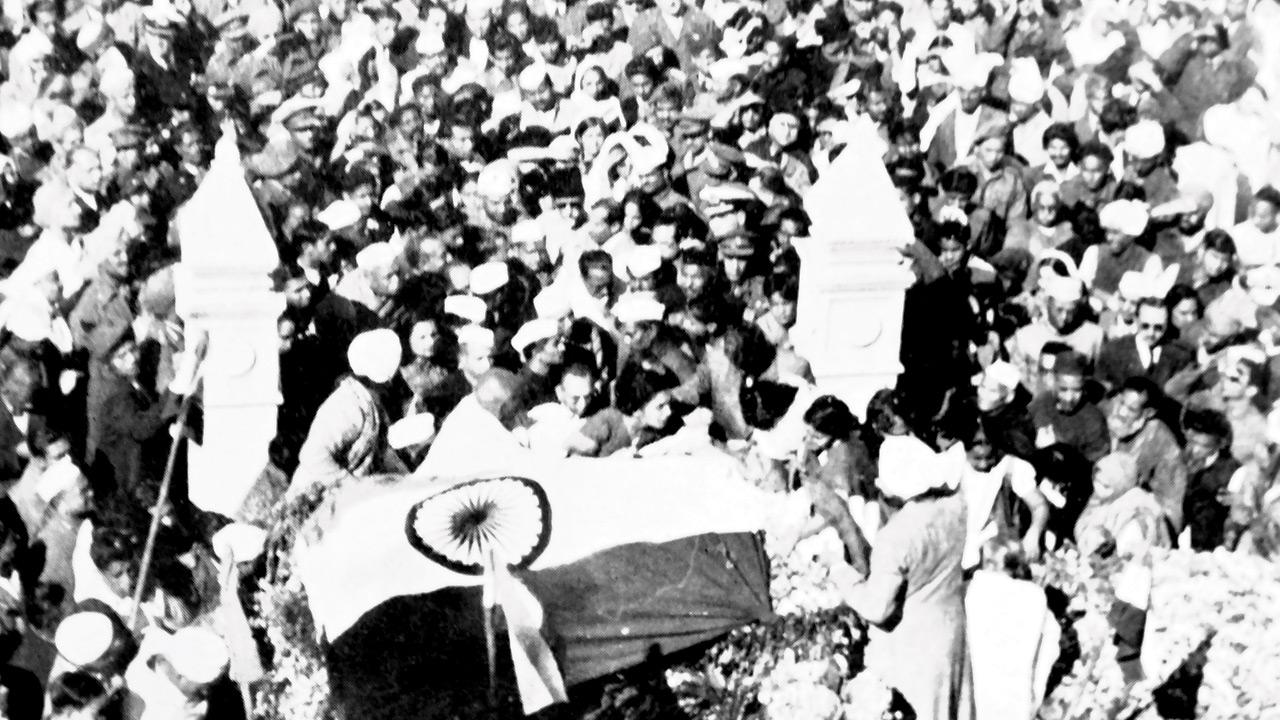
Ameen Sayani (right) decided at age 16 to broadcast in the rashtra bhasha, on hearing news of Gandhiji’s assassination; the funeral procession on January 31, 1948, with over a million mourners. Pics courtesy/Getty Images, Rajil Sayani
Everyone’s beloved radio host Ameen Sayani believed a compere’s diction should encompass “seven S qualities”: sahi (correct), satya (true), saral (simple), spasht (clear), sabhya (decent), sundar (beautiful), swabhavik (natural). Till he turned 16, Hindi was not a priority. “But on January 31, 1948, that dreadful day of Gandhiji’s assassination, I made a resolution,” he declared.
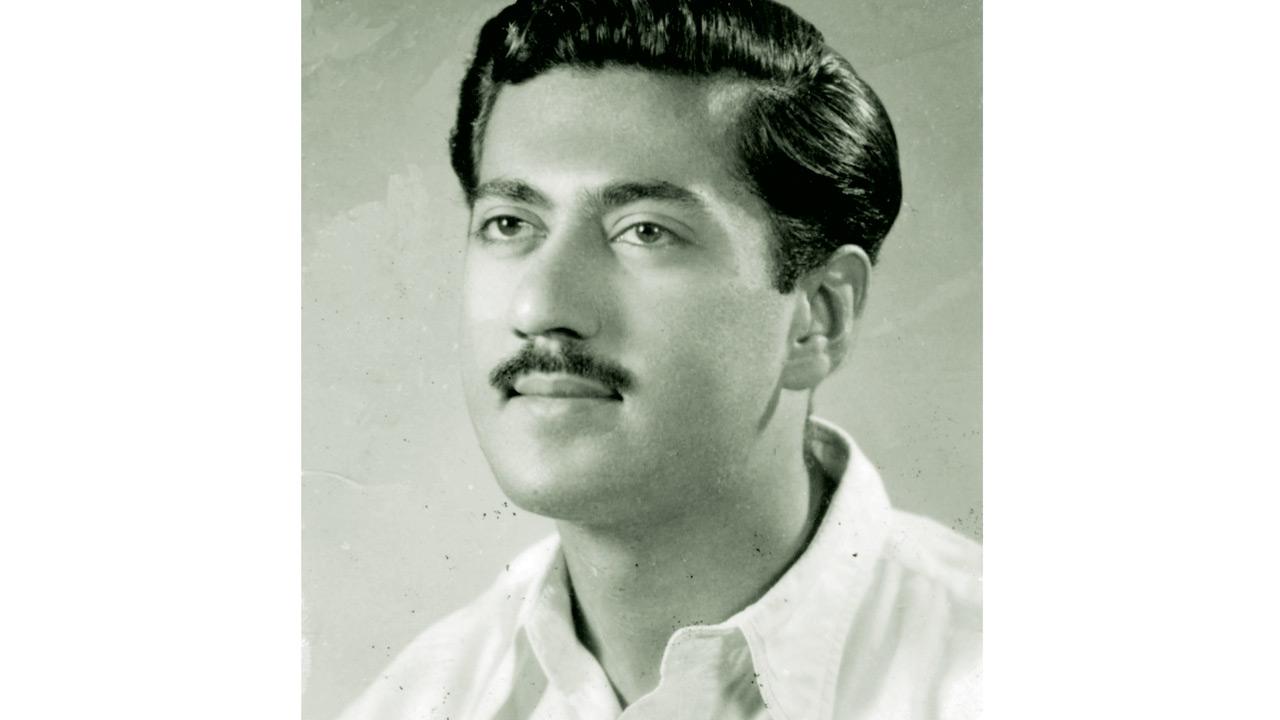
“News of those fatal gunshots reached us students in the Common Room of St Xavier’s College. I was determined — as ‘naye Bharat ka naya naujawan’, I would work in our rashtra bhasha. Auditioning for Hindi broadcasting with the AIR chiefs proved my diction needed less English and Gujarati accents. To improve my Hindustani, I went for radio technology training. I prayed to God, Gandhiji, and my mother for 200-300 letters from listeners of the first show in December 1952. I got 9000.”
‘Nowhere have I felt safe as I did that flood day in Bombay’
Heavy state-wide flooding, July 26, 2005
How does a city tragedy still pull you to stay on? Walking around the Cooperage on a heritage trail, I once got chatting with a photographer who confessed to being smitten by a Bombay she saw “at worst, yet best”. When it drowned under the fatal floods of July 26, 2005. “I’ve lived in Delhi and all over the country,” she said. “Nowhere have I felt safe as I did that day, even trapped in neck-high swirling water. What a lot of ways ordinary people made sure I didn’t collapse with fear or hunger.” She decided right off, to shift here. The city’s inherent acceptance and generosity moved her completely. As she puts it, “I didn’t choose Bombay; Bombay chose me.”
‘I will forever cherish that fateful day’s kindest acts’
Bombay Police Riots, August 18, 1982
It was a violent Wednesday, 43 years ago. Police riots spilled on the streets, with more than 20,000 constables fighting for labour issues, demanding improved work conditions and the right to unionise. What ensued was rampant arson, looting and vandalism.
Then a collegian residing in Bandra who has since moved to Perth, Niloufer Barjorji recalls: “It was a very scary, yet extremely special day, caught in the crossfire of the police force rebelling. I was on my way to St Xavier’s, talking a lift with my dad. As we passed through Dharavi, the mayhem erupted. Cops started rioting and crowds went crazy, with no authority figures to stop the wild scenes. Stuck daylong in our non-air conditioned car in the heat, I felt ill. As it happened, I had my period. Noticing me look pale and anxious, a woman came down from her house, asking if I needed to rest. Taking us in, after making tea and snacks, she persuaded me to nap.
“Evening brought no visible resolution. Dad worried for our safety, particularly mine as a young girl. The occupant of the car parked beside us thoughtfully phoned his brother, a short drive away, requesting him to shelter us for the night. “They were the sweetest people. Sharing their dinner, they insisted on giving us their bedroom; they slept on floor mattresses. Dad decided to leave at 4 the next morning. The lady of the house woke earlier to serve tea and coaxed us to have breakfast, but we hurried to leave. I will forever cherish that fateful day’s kindest acts, the depth of concern shown by so many. None of them known to us.”
‘No hearing one-sided accounts’
Indo-Pak War, December 1965
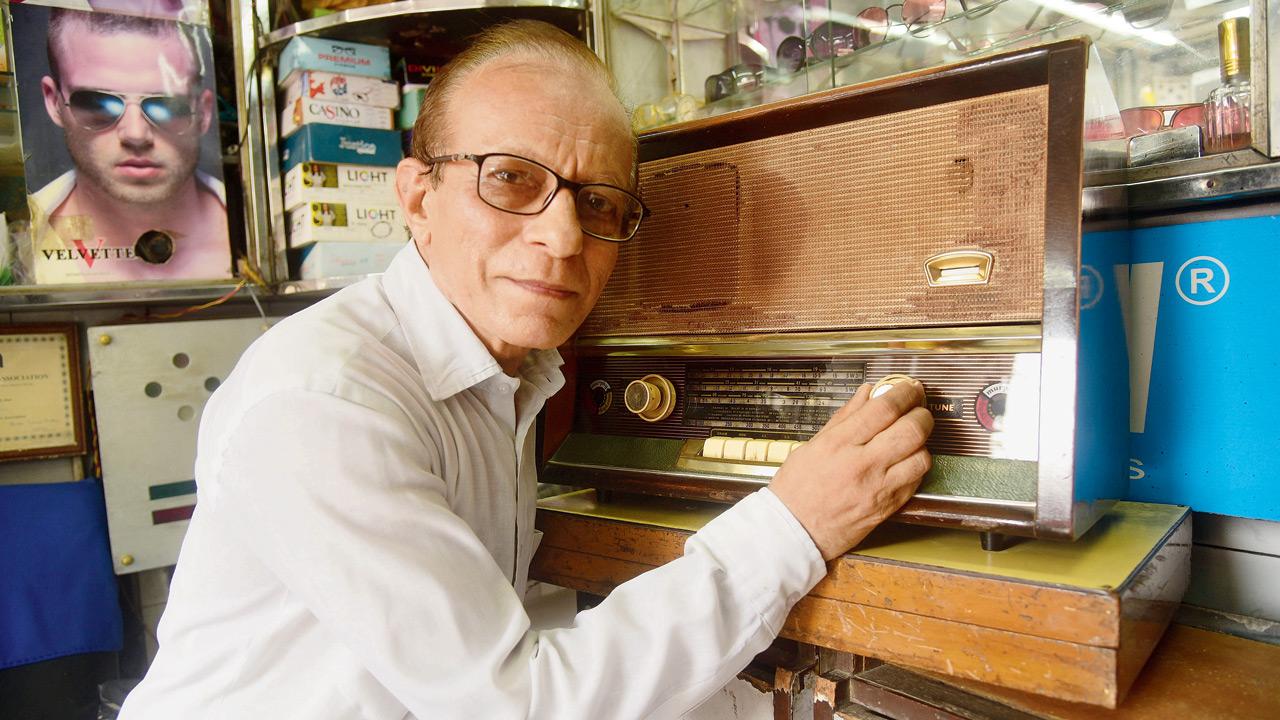
Optometrist Hemant Samani with his family radio. File pic
In an age rife with multiple media channels, radio remains the constant companion of many. Interviewing optometrist Hemant Samani and florist Kantibhai Sukhadia, in adjoining Kalbadevi shops, I discovered their charming everyday routine — swapping views on favourite shows. “Ameh radio paachhal paagal chhaiyye (we’re mad about radio),” says Samani. “My parents never missed KL Saigal songs. I followed AFS Talyarkhan and Vijay Merchant’s sports commentaries. During the 1965 Indo-Pak war, my father switched to BBC for news of Lahore and Rawalpindi, telling us, ‘No hearing one-sided accounts’.” More polarised than pacifist, we could do with such objectivity today.
 Subscribe today by clicking the link and stay updated with the latest news!" Click here!
Subscribe today by clicking the link and stay updated with the latest news!" Click here!










